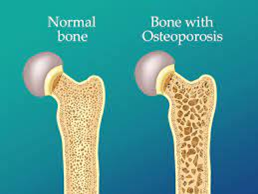A nurse is assessing a client who is receiving IV ciprofloxacin to treat a urinary tract infection. Which of the following findings should the nurse identify as the priority to report to the provider?
Nausea and vomiting
Daytime drowsiness
Tendon pain when walking
Photosensitivity
The Correct Answer is C
When assessing a client receiving ciprofloxacin, the nurse should prioritize reporting tendon pain when walking to the provider. Ciprofloxacin is a fluoroquinolone antibiotic that can rarely cause tendonitis or tendon rupture, particularly in the Achilles tendon. Tendon pain, especially when associated with difficulty walking, can be indicative of a serious adverse effect and requires immediate attention and evaluation by the provider.
Nausea and vomiting (A) are common side effects of ciprofloxacin but are typically not considered urgent or life-threatening. They can often be managed with supportive care measures and may not require immediate intervention.
Daytime drowsiness (B) is not typically associated with ciprofloxacin and may be unrelated to the medication. It should be assessed and reported if it persists or is severe, but it is not a priority finding specifically related to ciprofloxacin administration.
Photosensitivity (D) is a known side effect of ciprofloxacin, but it is not typically considered a priority finding unless it is severe or causing significant discomfort. Adequate sun protection measures can help manage photosensitivity.
Nursing Test Bank
Naxlex Comprehensive Predictor Exams
Related Questions
Correct Answer is C
Explanation
A. Urinary retention: While urinary retention can be a side effect of meperidine and other opioids, it is not the priority assessment before administering the medication. Urinary retention is a concern but is not immediately life-threatening compared to other potential side effects of opioids, such as respiratory depression. Assessing urinary retention is important, but it is not the primary concern in this situation.
B. Vomiting: Vomiting can also be a side effect of opioids, including meperidine. While it is essential to assess for vomiting and its potential impact on the client's overall condition, it is not the priority assessment before administering the medication. Vomiting can be managed, and the nurse should address it as needed. However, the priority assessment is one that can affect the client's immediate safety and well-being, such as respiratory rate and potential respiratory depression.
C. Respiratory rate: This is the correct answer. The priority assessment before administering meperidine is the client's respiratory rate. Opioids can cause respiratory depression, leading to reduced breathing and inadequate ventilation. Monitoring the respiratory rate allows the nurse to detect any signs of respiratory distress or inadequate breathing, enabling them to intervene promptly to prevent serious complications.
D. Level of consciousness: While assessing the client's level of consciousness is essential for overall assessment and monitoring, it is not the priority assessment before administering meperidine. Respiratory depression due to opioid use can occur even when the client is conscious. However, if respiratory depression occurs, it can lead to a decrease in consciousness and potentially unconsciousness, making the assessment of respiratory rate more critical to prevent such complications.

Correct Answer is B
Explanation
Before administering the first dose of metformin, the nurse should evaluate the client's creatinine level. Metformin is primarily excreted by the kidneys, and its clearance from the body depends on the renal function. If the client has impaired kidney function, metformin can accumulate in the body and lead to potential adverse effects, particularly lactic acidosis.
Monitoring the creatinine level helps assess the client's kidney function and determines whether it is safe to administer metformin. If the creatinine level is elevated, indicating reduced kidney function, the nurse should consult with the healthcare provider to determine the appropriate dose adjustment or consider an alternative treatment option.
Let's go through the other options and explain why they are not the priority laboratory results to evaluate before administering metformin:
A. Potassium level: While monitoring potassium levels is important in some situations, it is not a primary concern before administering metformin. Metformin does not have a significant effect on potassium levels, and it is not a medication known for causing hypokalemia (low potassium levels).
C. Platelet count: Metformin does not have a direct impact on platelet count, and evaluating platelet count is not typically required before starting metformin therapy. Platelet count monitoring may be relevant for certain other medications or medical conditions, but it is not specific to metformin administration.
D. Liver enzymes: While it is essential to monitor liver function in clients on long-term metformin therapy, evaluating liver enzymes before the first dose of metformin is not the priority. Metformin is primarily cleared by the kidneys, and liver enzymes are not directly affected by its initial administration. However, ongoing monitoring of liver function may be necessary during long-term
Whether you are a student looking to ace your exams or a practicing nurse seeking to enhance your expertise , our nursing education contents will empower you with the confidence and competence to make a difference in the lives of patients and become a respected leader in the healthcare field.
Visit Naxlex, invest in your future and unlock endless possibilities with our unparalleled nursing education contents today
Report Wrong Answer on the Current Question
Do you disagree with the answer? If yes, what is your expected answer? Explain.
Kindly be descriptive with the issue you are facing.
